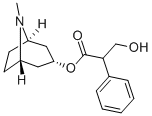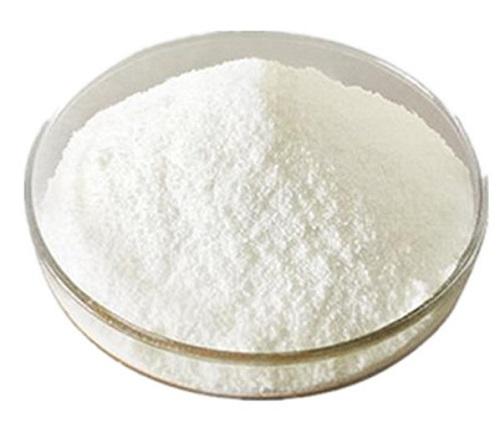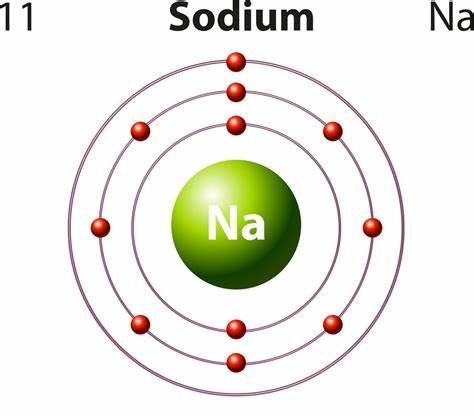Atropine Vs Adenosine: Similarities and Differences
Similarities of Atropine Vs Adenosine
Atropine and Adenosine are used to treat heart rate disorders. The combination of the two may be used in clinical studies for arrhythmias or coronary artery disease. Adenosine is an endogenous glycoside found in human cells that enters the myocardium directly and undergoes phosphorylation in order to produce adenosine. It can be involved in myocardial energy metabolism as well as dilating coronary arteries and increasing blood flow. Atropine prevents heart attacks by dilating the coronary arteries and increasing the oxygen supply to the heart muscle.

Differences of Adenosine Vs Atropine
Adenosine
Adenosine, a class 5 antiarrhythmic drug, is an important intermediate in the synthesis of adenosine triphosphate, adenine, adenosine monophosphate, and arabinoglycoside, and thus plays a very important physiological role.
Adenosine is used in the medical field for the treatment of supraventricular arrhythmias associated with atrial ventricles, but also for the treatment of angina pectoris, myocardial infarction, coronary artery dysfunction, atherosclerosis, essential hypertension, cerebrovascular disease, post-stroke sequelae, and progressive muscular dystrophy. In addition, adenosine has firming and anti-aging properties, stimulates hair growth, whitening and anti-inflammatory effects.
Common side effects of adenosine include: arrhythmia, shortness of breath, and low blood pressure. A serious side effect is that it can cause the (deliberate) heart to stop for 6-12 seconds. It should be used with caution in patients with sinus bradycardia or AV block. Dipyridamole blocks the uptake of adenosine, which enhances its action. Patients taking this drug should choose other drugs to treat their arrhythmia.
Atropine
Atropine is an anticholinergic drug used primarily to relieve gastrointestinal spasms and prevent heart attacks. Its mechanism of action is respectively to inhibit the action of acetylcholine, thus reducing the contraction of gastrointestinal smooth muscle, relieving gastrointestinal spasms and relieving symptoms such as abdominal pain and diarrhoea; as well as to dilate bronchial tubes, improve respiratory spasms, and alleviate the symptoms of asthma and chronic obstructive pulmonary disease.
Atropine, as a cholinergic receptor blocker, is commonly used clinically as a pre-anaesthetic or rescue drug. Atropine's main effect on the heart is to affect the heart rate and is dose dependent. At small doses it slightly decreases heart rate; at doses greater than 1 mg it increases heart rate by relieving vagal depression of the heart rate, with the effect increasing with dose.
Additionally, Atropine is also commonly used to resuscitate critically ill patients by increasing heart rate and blood pressure, relieving smooth muscle spasms and small blood vessels, which in turn relieves the symptoms of angina in organs such as the heart and internal organs.
Atropine side effects are the same as those of other anticholinergic drugs. They may include: blurred vision, dry mouth, urinary retention, constipation, and possibly tachycardia. Patients need to be monitored for urinary retention when taking Atropine as it can lead to urinary tract infections, bladder damage, kidney damage and incontinence. Patients should increase their fibre and fluid intake in order to prevent constipation. Other precautions for atropine include banning glaucoma, prostate enlargement and high fever.
In conclusion, both adenosine and atropine can be used as antiarrhythmic drugs. Adenosine is used to treat supraventricular arrhythmias, angina pectoris, myocardial infarction, coronary artery dysfunction, atherosclerosis, essential hypertension, cerebrovascular disease and progressive muscular atrophy. Atropine can be used to prevent heart attacks. Please must strictly follow your doctor's advice for specific medication.
References
[1] D. TUPONE; S. F M. Atropine reduces cardiac arrhythmias that occur during the hypothermic state induced by central activation of adenosine A1 receptors[J]. Autonomic Neuroscience-Basic & Clinical, 2013. DOI:10.1016/j.autneu.2013.08.036.
[2] M. SOTIRIADOU. Adenosine plasma levels and adenosine receptor levels determine the outcome of adenosine test and head-up tilt test in syncopal patients with a normal heart[J]. European Heart Journal, 2021. DOI:10.1093/EURHEARTJ/EHAB724.0605.
[3] EMILY CASH; Amanda L T; Amanda T Goodwin. Adenosine receptor signalling as a driver of pulmonary fibrosis[J]. Pharmacology & Therapeutics, 2023. DOI:10.1016/j.pharmthera.2023.108504.
You may like
Related articles And Qustion
See also
Lastest Price from Atropine manufacturers

US $0.00/Kg/Bag2025-04-21
- CAS:
- 51-55-8
- Min. Order:
- 1KG
- Purity:
- 99.0% ~ 100.5%,USP30
- Supply Ability:
- 200kg/month

US $9.00-5.00/kg2024-08-20
- CAS:
- 51-55-8
- Min. Order:
- 1kg
- Purity:
- 99.9%
- Supply Ability:
- 200ton



